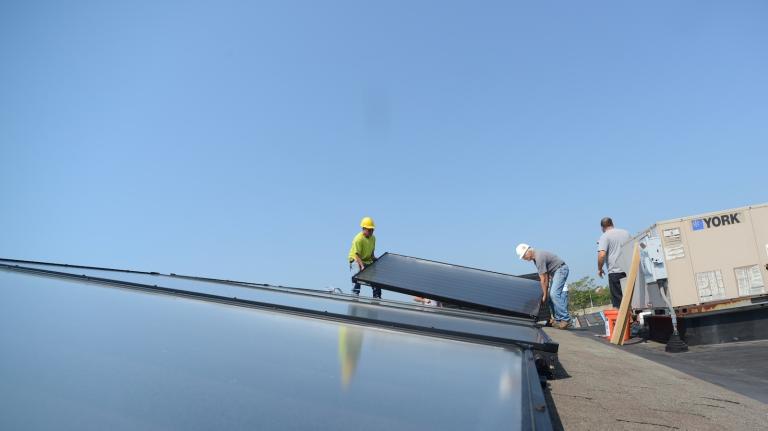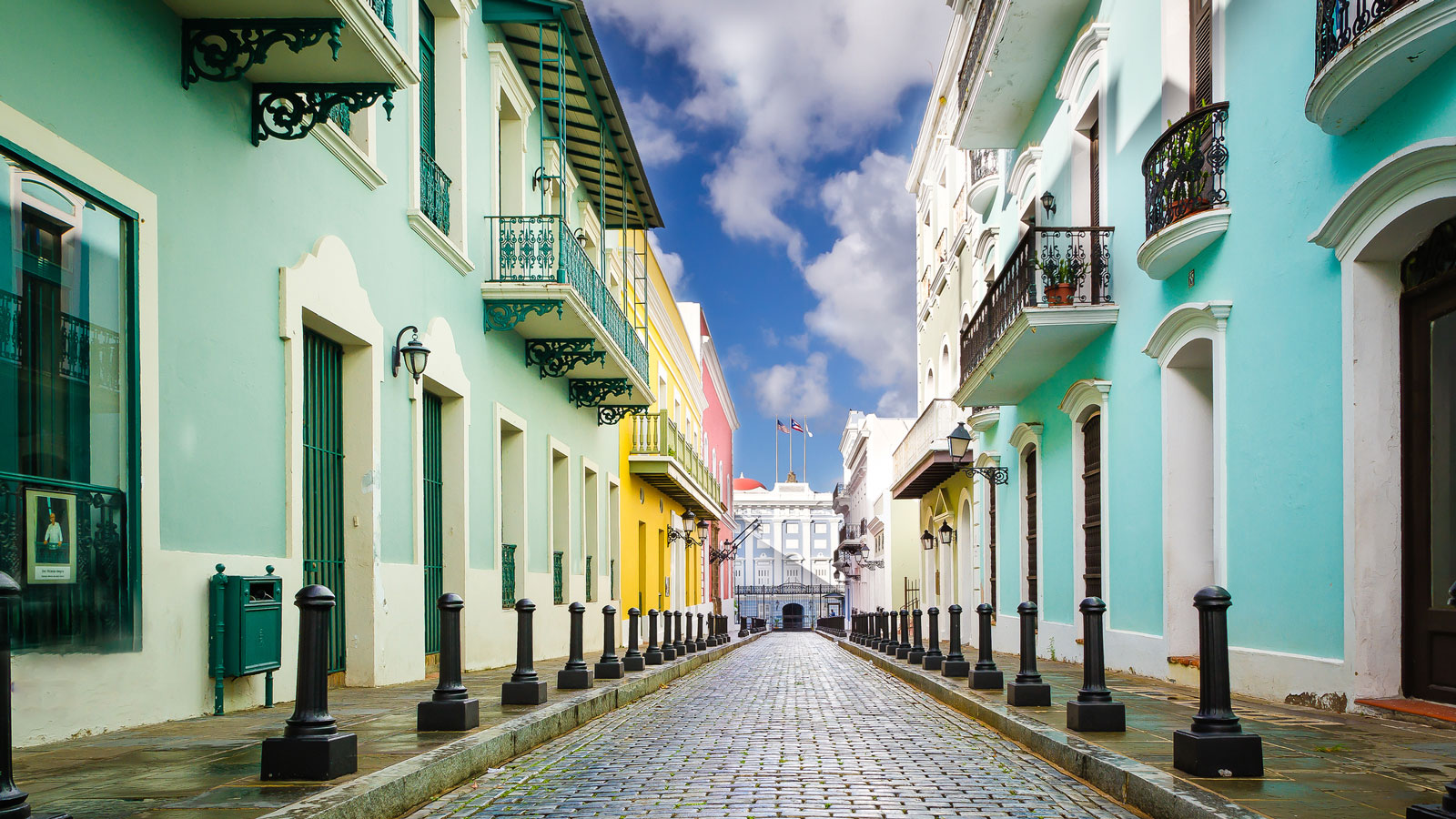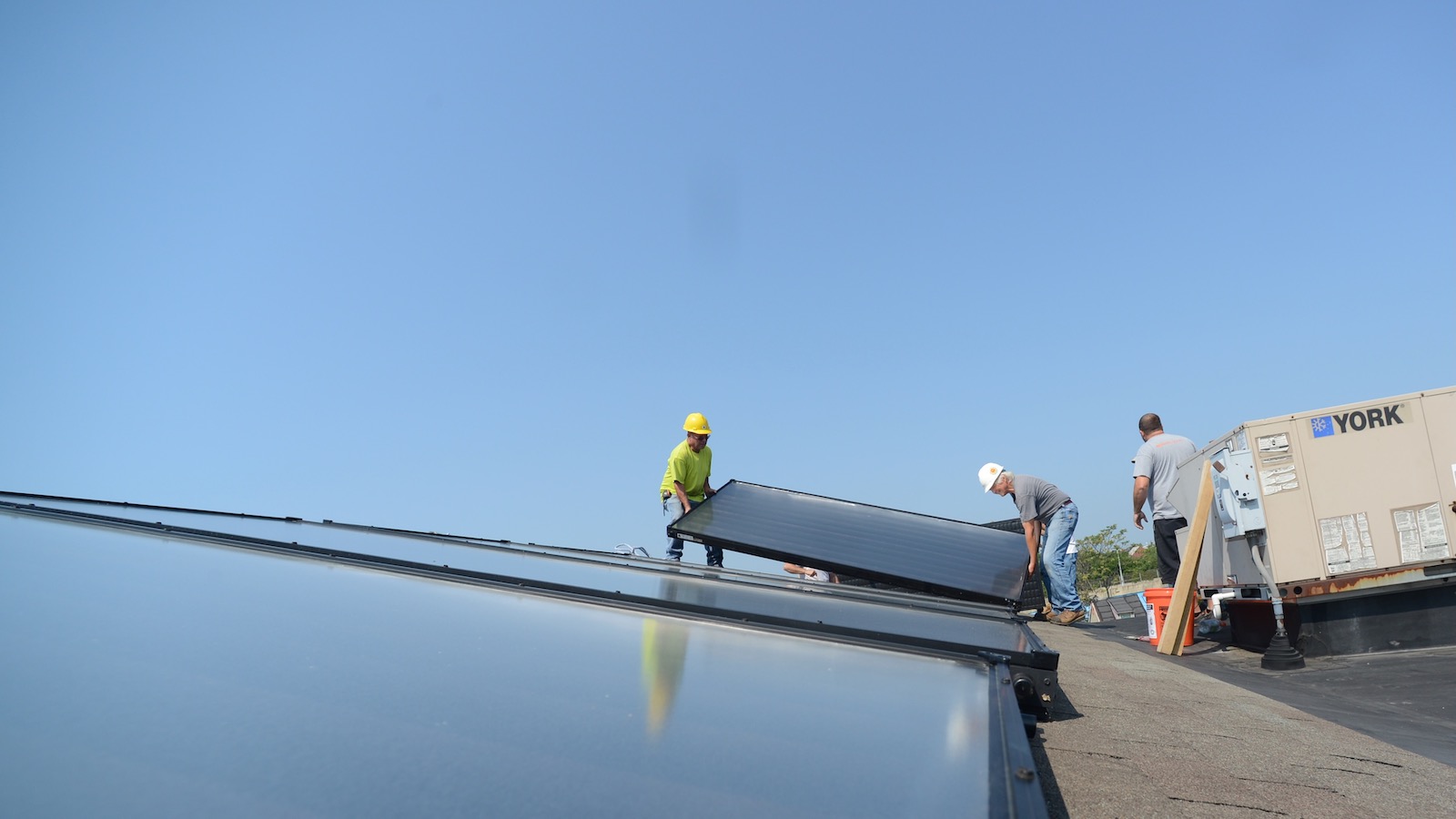As states across the country roll back how much they pay rooftop-solar owners for the surplus electricity they send back to the grid, Puerto Rico is bucking the trend, protecting its generous solar credits until at least the end of the decade.
California, Arkansas, Idaho, Indiana, and North Carolina have all taken recent steps to change or get rid of these payments, which are known as net metering. But Governor Pedro Pierluisi signed a bill last month extending the U.S. territory’s program. The reason, advocates say, is that net metering is too essential to the archipelago’s clean energy goals, and the security of its people.
“It is our responsibility to promote the transformation of our electricity system and promote any initiative that aims to avoid: the excessive dependence on fossil fuels, environmental pollution, and increasing the effects of climate change,” the law states.
Net metering plays an important role in boosting solar’s popularity. Systems can cost between $10,000 and $20,000 on average, and even more when they include battery storage. The savings earned by selling excess energy offsets those costs, and helps the system pay for itself over time.
“It provides an incentive for people to go solar, and without it it’s just a lot more challenging financially,” Joseph Wyer, a policy analyst at the solar data firm Ohm Analytics, told Grist.
States typically adopt net metering policies to promote the technology’s uptake. “If the net metering policy is stable, then the growth of the market should be a lot more stable, too,” said Wyer.
But utilities that favor reducing or eliminating this compensation argue that the credits granted to homeowners are often overvalued, and that the policy passes on the costs of operating the grid to households that don’t have solar. The policy tends to attract scrutiny once an area reaches a certain level of solar penetration. When California regulators unanimously voted in 2022 to slash credits by 75 percent, they said the subsidy was no longer needed to propel the technology’s adoption.
Those pushing to move on from net metering say doing so will help spur battery adoption, and the way to recoup one’s investment on solar panels will shift from selling excess electricity to storing it in a home battery and using that energy at night rather than paying for power from the grid. Those batteries can also be leveraged to create virtual power plants, which use stored energy to ease demand on the grid and even feed power back to it. In Hawaiʻi, the percentage of projects that included battery storage increased from less than 15 percent to more than 80 after it cut its solar credits in 2015, according to Ohm Analytics.
Net-metering proponents argue that eliminating the benefit causes catastrophic drops in installation rates and undermines renewable energy goals. Three years after Hawaiʻi cut solar credits, Ohm Analytics estimates the household solar market had shrunk by more than half, and that the time it would take to pay off a system increased from five to nine years. Ohm projects California’s household solar market will contract by 42 percent this year, though higher interest rates are also contributing to that downturn.
Wyer said that dramatic changes like those in California and Hawaiʻi are reactive, and aren’t the right way to address concerns about cost-shifting or battery adoption. “I don’t think that cutting net metering by 75%, or a very sharp decline, leads to a stable, healthy environment for the growth of electrification.”
A solar slowdown was a risk policymakers in Puerto Rico were not willing to take. The territory currently sources 97 percent of its energy from fossil fuels — and more than half of it from burning coal and oil — but it has ambitious renewable energy goals. Its legislature passed a law five years ago requiring the archipelago to reach 40 percent clean energy by 2025 and 100 percent by 2050.
Puerto Ricans also view energy resilience as a matter of survival. Solar adoption skyrocketed after Hurricane Maria in 2017, and today more than 110,000 of Puerto Rico’s 1.2 million households have solar arrays. Because of the constant risk of power outages, nearly all of them include battery storage. The archipelago is installing about 4,500 systems per month. All of that sun power is offsetting energy demand by about 600 megawatts during the day, preventing blackouts on a daily basis.
It’s unlikely that the meteoric growth would be sustained without the solar credits that make financing or leasing affordable. The average household income is $24,000. “The intention of the law is to protect consumers,” said Maritza Maymi, legislative director of the Sierra Club Puerto Rico, which petitioned for the bill.
“For us it’s very important not only to move away from fossil fuels, but also to give energy security to people, especially in times of emergencies,” added Maymi. “Energy is not only a commodity, but a right that people should have access to.”
Puerto Rico’s policy, which was set to expire as soon as this April, offers a one-for-one bill credit for every kilowatt hour that a household sends back to the grid. If a house consumes 800 kilowatt hours in a month and sends 300 kilowatt hours to the grid, for example, it is billed for 500 kilowatt hours. The new law says any study reevaluating the policy can’t begin until 2030, and that changes to the credits cannot take effect fewer than 12 months after they are decided upon.
The economic and safety stakes were high enough that proponents of extending the net metering policy earned support across all five of Puerto Rico’s political parties. The bill passed unanimously.
“We talked to members from other parties right away and found support across the aisle so that it would not be a partisan bill,” said Maymi. “We gave them social reasons and economic reasons for supporting the bill, and they saw the need to protect the program.”
As for the usual critiques of the costs of net metering, Eduardo Bhatia, a former legislator who drafted the clean energy mandate in 2019, said the benefits to promoting solar adoption outweighed those concerns. “In my eyes, it pays for itself in a dramatic reduction in old and antiquated generation in Puerto Rico, and in [the] purchase of oil and expensive fossil fuels,” Bhatia told Grist.
Bhatia added that concerns over why other consumers should subsidize solar credits don’t consider the collective benefit of transitioning to clean energy, gaining resilience against hurricanes, and taking pressure off the grid. “It has a net positive effect on the whole island of Puerto Rico.”
As for the rest of the country, Wyer said that states that want to take another look at their solar incentives might consider a middle ground between slashing credits and paying the full retail price for them. In New Hampshire, customers receive a credit equal to about 75 percent of the standard electricity rate. That’s enough to entice households to install the systems, and coupled with battery incentives, could get them to consider adding storage for more savings. “You need to find a way to incentivize the battery without killing the solar,” he said.
Correction: A quote has been updated to eliminate confusion over which entity procures Puerto Rico’s energy fuels.




